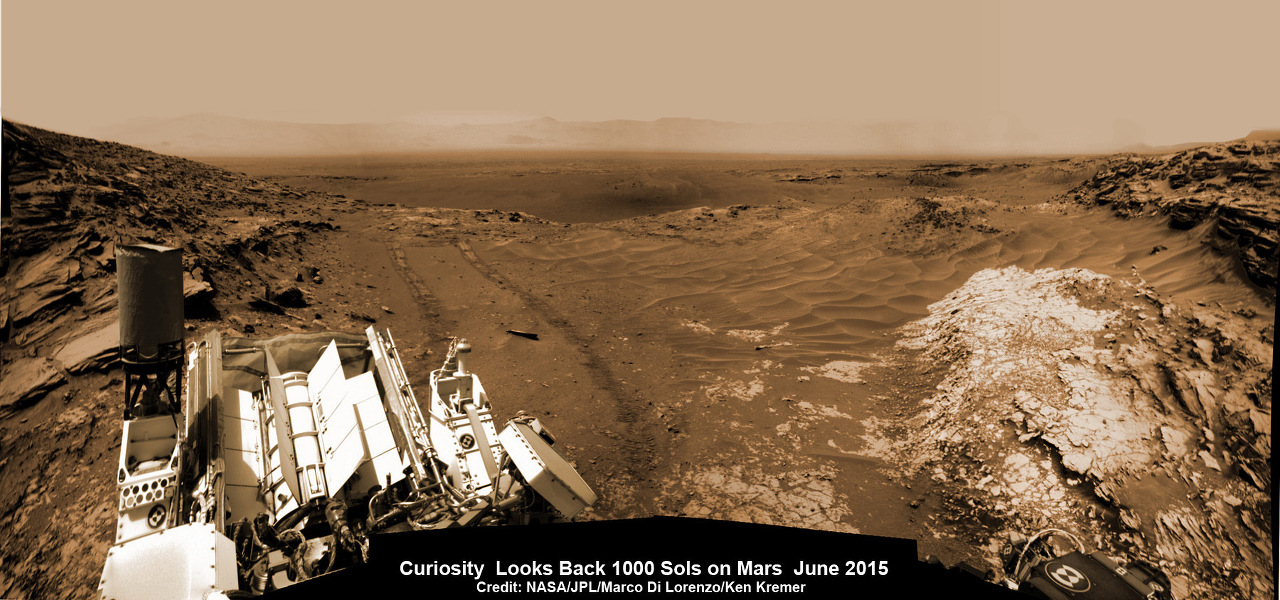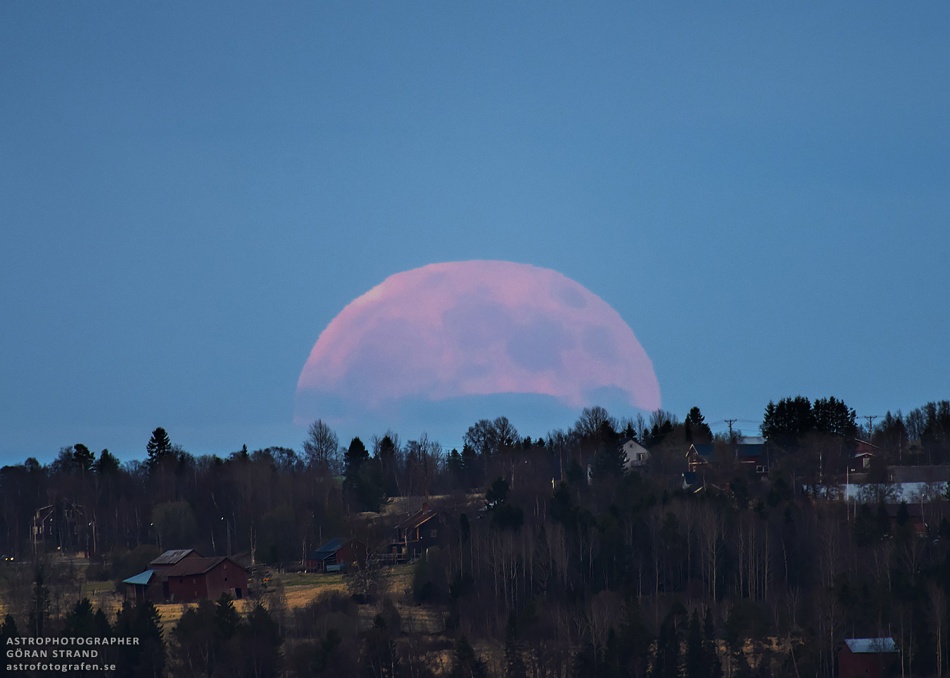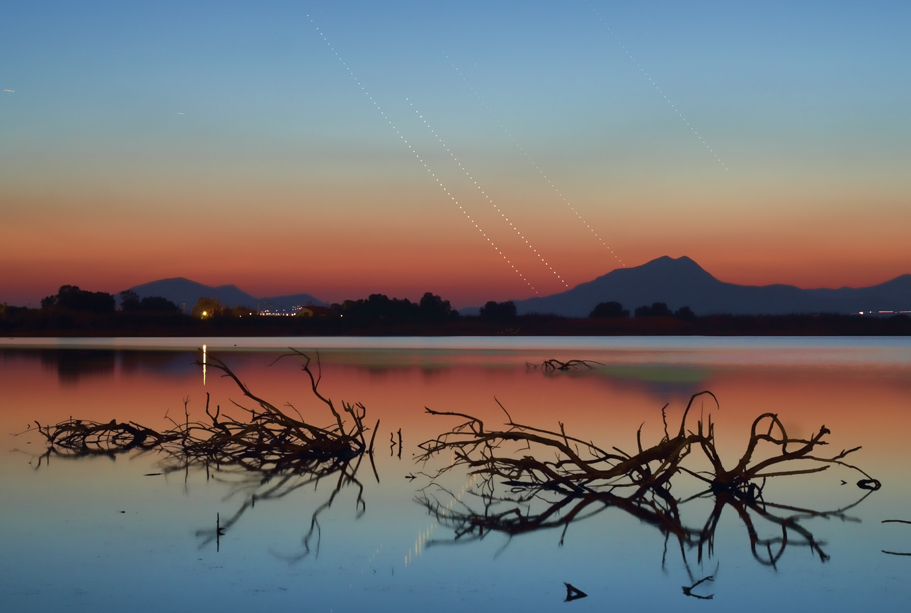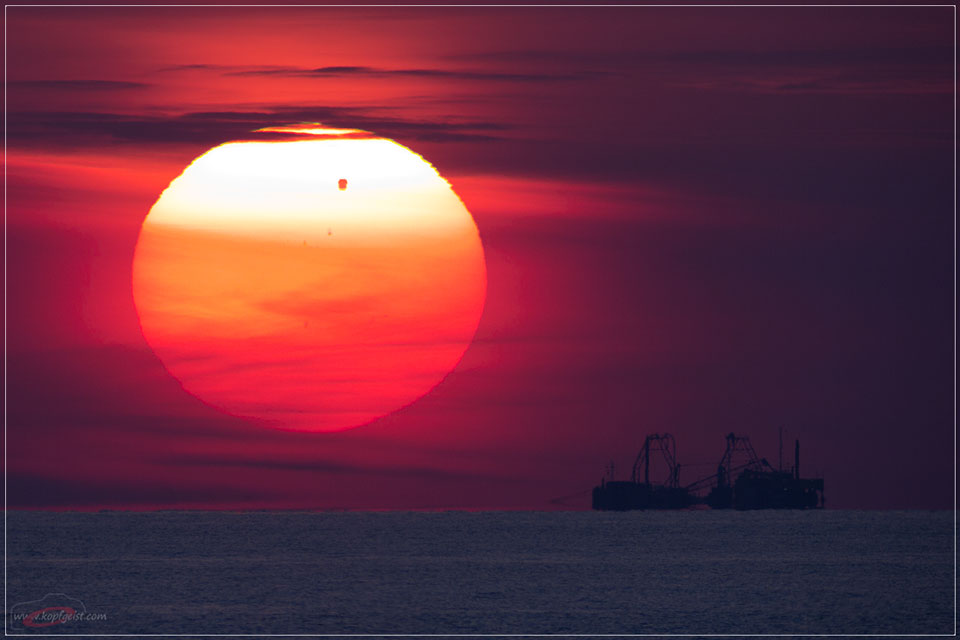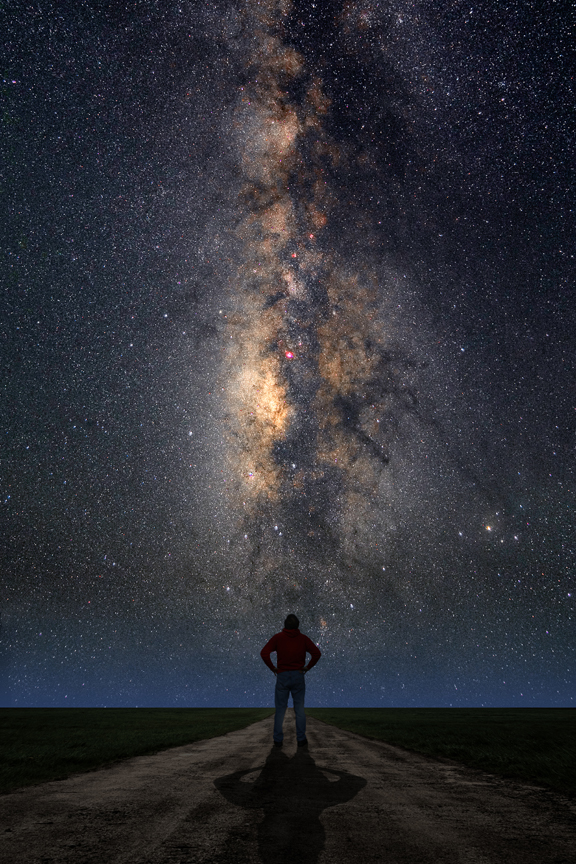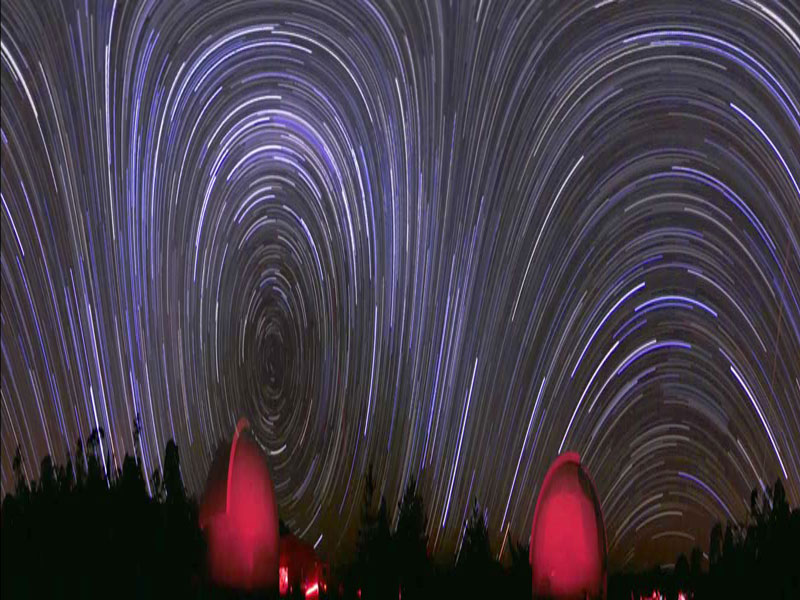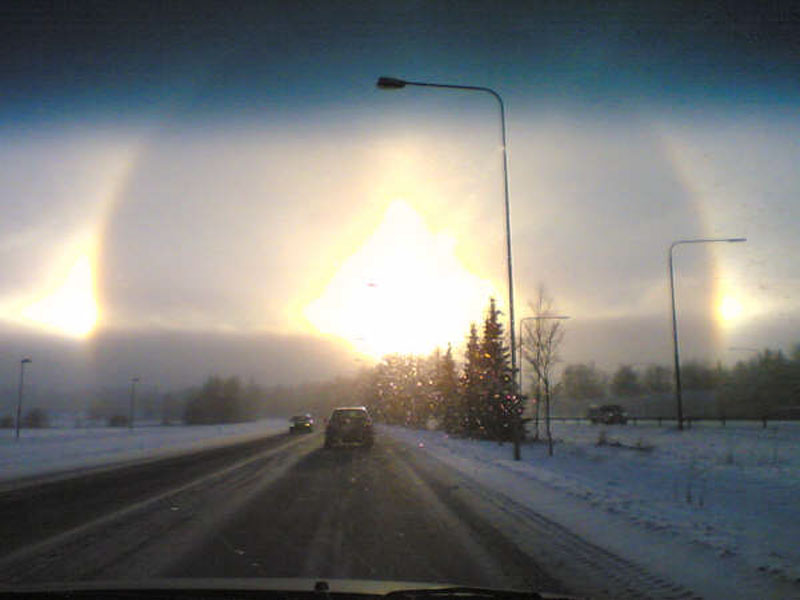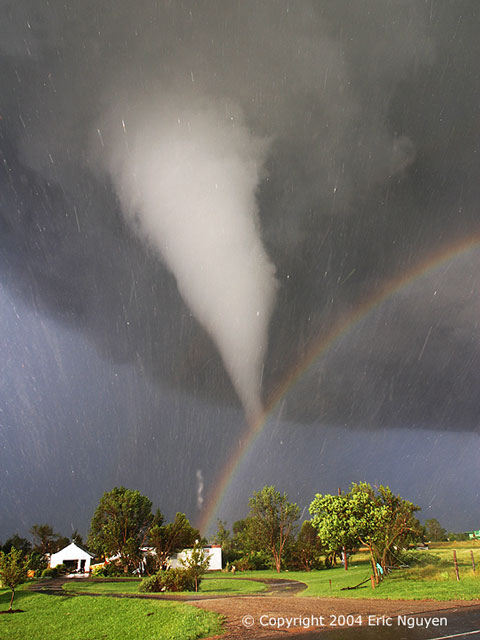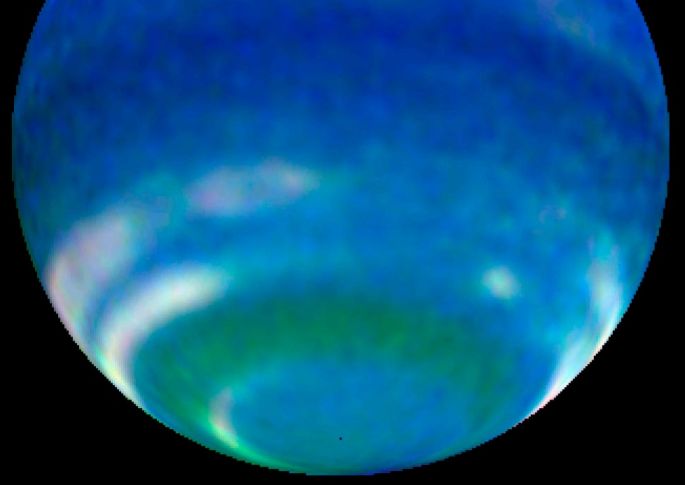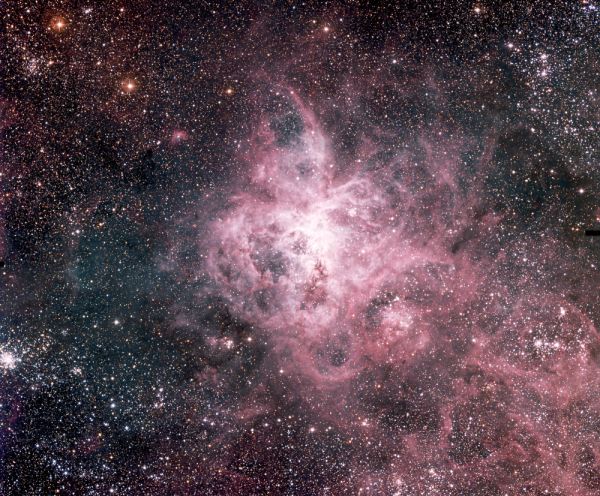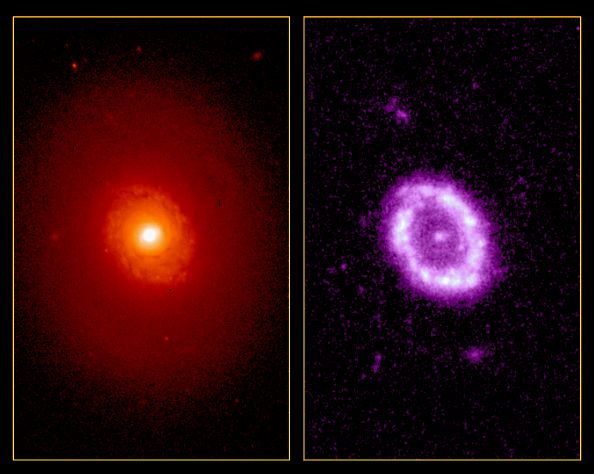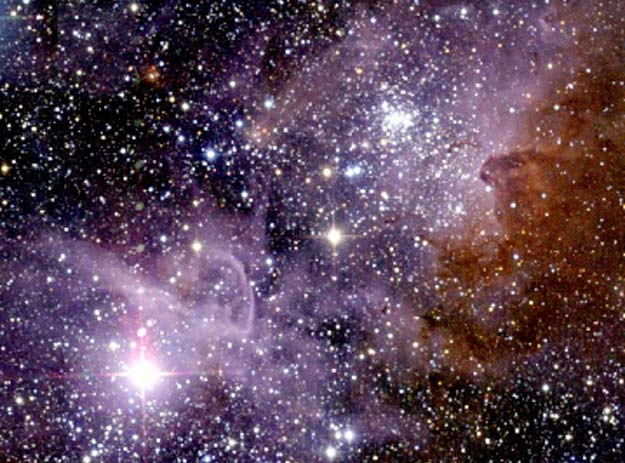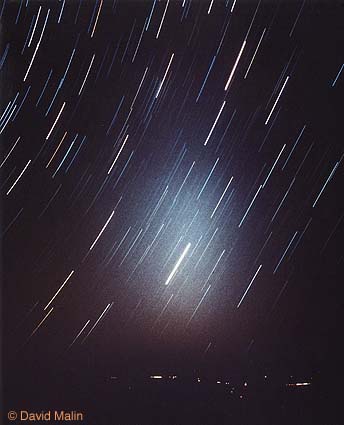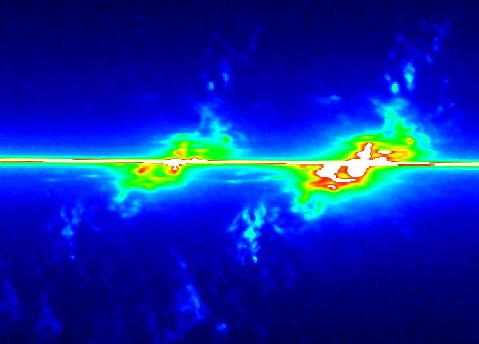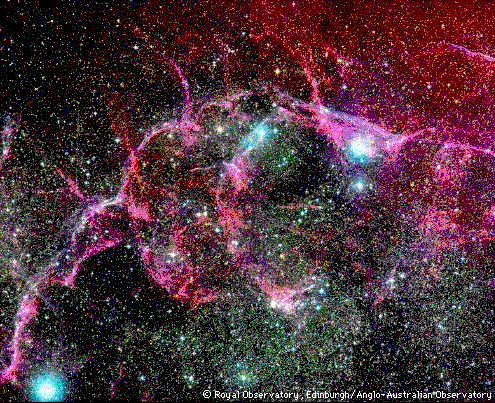| << Previous | Index | Next >> |
2015 Shortly before Mars' June 2015 conjunction, the Curiosity Rover celebrated 1000 sols on the red planet. After its August 5, 2012 landing, Curiosity's 1000th sol or martian day on the surface corresponded to planet Earth's calendar date May 31, 2015. Because the line-of-sight to Mars is close to the Sun near the conjunction, radio communications are affected and the six-wheeled, car-sized robotic rover cautiously remains parked at this spot for now. The view looks back toward the stomping grounds for Curiosity's nearly 10.6 kilometer trek so far, with the hazy rim of Gale Crater in the distance. The mosaicked panorama was constructed with images from navigation cameras taken on Curiosity's sol 997.
2014 June's Full Moon (full phase on June 13, 0411 UT) is traditionally known as the Strawberry Moon or Rose Moon. Of course those names might also describe the appearance of this Full Moon, rising last month over the small Swedish village of Marieby. The Moon looks large in the image because the scene was captured with a long focal length lens from a place about 8 kilometers from the foreground houses. But just by eye a Full Moon rising, even on Friday the 13th, will appear to loom impossibly large near the horizon. That effect has long been recognized as the Moon Illusion. Unlike the magnification provided by a telescope or telephoto lens, the cause of the Moon illusion is still poorly understood and not explained by atmospheric optical effects, such as scattering and refraction. Those effects do produce the Moon's blushing color and ragged edge also seen in the photograph.
2013 You can see four planets in this serene sunset image, created from a series of stacked digital exposures captured near dusk on May 25. The composite picture follows the trail of three of them, Jupiter, Venus, and Mercury (left to right) dropping toward the western horizon, gathered close in last month's remarkable triple planetary conjunction. Similar in brightness to planet Mercury, the star Elnath (Beta Tauri) is also tracked across the scene, leaving its dotted trail still farther to the right. Of course, in the foreground are the still, shallow waters of Alikes salt lake, reflecting the striking colors of sunset over Kos Island, Greece, planet Earth. For now, Jupiter has wandered into the glare of the setting Sun, but Mercury and Venus remain low in the west at twilight.
2012 Waiting years and traveling kilometers -- all to get a shot like this. And even with all of this planning, a good bit of luck was helpful. As the Sun rose over the Baltic Sea last Wednesday as seen from Fehmarn Island in northern Germany, photographer Jens Hackmann was ready for the very unusual black dot of Venus to appear superimposed. Less expected was the textures of clouds and haze that would taint different levels of the Sun various shades of red. And possibly the luckiest gift of all was a flicker of a rare green flash at the very top of the Sun. The above image is, of course, just one of many spectacular pictures taken last week of the last transit of the planet Venus across the face of the Sun for the next 105 years.
2011
Credit: Images: Cassini Imaging Team, ISS, JPL, ESA, NASA; Video Compilation: Chris Abbas;
Music Credit & License: Ghosts I-IV (Nine Inch Nails)
Music Credit & License: Ghosts I-IV (Nine Inch Nails)
2010
[imghover6=http://apod.nasa.gov/apod/image/1006/re ... _tezel.jpg]http://apod.nasa.gov/apod/image/1006/re ... otated.jpg[/imghover6]Credit & Copyright: Tunç Tezel (TWAN)
2009 Inspired by the night skies of planet Earth in the International Year of Astronomy, photographer Larry Landolfi created this tantalizing fantasy view. The composited image suggests a luminous Milky Way is the heavenly extension of a country road. Of course, the name for our galaxy, the Milky Way (in Latin, Via Lactea), does refer to its appearance as a milky band or path in the sky. In fact, the word galaxy itself derives from the Greek for milk. Visible on moonless nights from dark sky areas, though not so bright or colorful as in this image, the glowing celestial band is due to the collective light of myriad stars along the plane of our galaxy, too faint to be distinguished individually. The diffuse starlight is cut by dark swaths of obscuring galactic dust clouds. Four hundred years ago, Galileo turned his telescope on the Milky Way and announced it to be "... a congeries of innumerable stars ..."
2008 Rising through a billowing cloud of smoke, this Delta II rocket left Cape Canaveral Air Force Station's launch pad 17-B Wednesday at 12:05 pm EDT. Snug in the payload section was GLAST, the Gamma-ray Large Area Space Telescope, now in orbit around planet Earth. GLAST's detector technology was developed for use in terrestrial particle accelerators. But from orbit, GLAST can study gamma-rays from extreme environments in our own Milky Way galaxy, as well as supermassive black holes at the centers of distant active galaxies, and the sources of powerful gamma-ray bursts. Those cosmic accelerators achieve energies not attainable in earthbound laboratories. GLAST also has the sensitivity to search for signatures of new physics in the relatively unexplored high-energy gamma-ray regime.
2007 What's happened to the sky? A time warp, of sorts, and a digital space warp too. The time warp occurs because the above image captured in a single frame a four hour exposure of the night sky. Prominent and picturesque star trails are visible. The space warp occurs because the above image is actually a full 360 degree panorama, horizontally compressed to fit your browser. As the Earth rotated, stars appeared to circle both the South Celestial Pole, on the left, and the North Celestial Pole, which occurs just below the horizon on the right. The above image captured the sky over Mudgee, New South Wales, Australia, including the domes of two large telescopes artificially lit by red light. A horizontally unwarped image is visible by clicking on the above image.
2006 What's happened to the Sun? Sometimes it looks like the Sun is being viewed through a large lens. In the above case, however, there are actually millions of lenses: ice crystals. As water freezes in the upper atmosphere, small, flat, six-sided, ice crystals might be formed. As these crystals flutter to the ground, much time is spent with their faces flat, parallel to the ground. An observer may pass through the same plane as many of the falling ice crystals near sunrise or sunset. During this alignment, each crystal can act like a miniature lens, refracting sunlight into our view and creating phenomena like parhelia, the technical term for sundogs. The above image was taken during early 2006 February near Helsinki, Finland with a quickly deployed cellular camera phone. Visible in the image center is the Sun, while two bright sundogs glow prominently from both the left and the right. Also visible is the 22 degree halo also created by sunlight reflecting off of atmospheric ice crystals.
2005 The scene might have been considered serene if it weren't for the tornado. Last June in Kansas, storm chaser Eric Nguyen photographed this budding twister in a different light -- the light of a rainbow. Pictured above, a white tornado cloud descends from a dark storm cloud. The Sun, peeking through a clear patch of sky to the left, illuminates some buildings in the foreground. Sunlight reflects off raindrops to form a rainbow. By coincidence, the tornado appears to end right over the rainbow. Streaks in the image are hail being swept about by the high swirling winds. Over 1,000 tornadoes, the most violent type of storm known, occur on Earth every year, many in tornado alley. If you see a tornado while driving, do not try to outrun it -- park your car safely, go to a storm cellar, or crouch under steps in a basement.
2004 Sometimes both heaven and Earth erupt. In Iceland in 1991, the volcano Hekla erupted at the same time that auroras were visible overhead. Hekla, one of the most famous volcanoes in the world, has erupted at least 20 times over the past millennium, sometimes causing great destruction. The last eruption occurred only two years ago but caused only minor damage. The green auroral band occurred fortuitously about 100 kilometers above the erupting lava. Is Earth the Solar System's only planet with both auroras and volcanos?
2003 In the 1960s spring came to the southern hemisphere of Neptune, the Solar System's outermost gas giant planet. Of course, since Neptune orbits the Sun once every 165 earth-years, it's still springtime for southern Neptune, where each season lasts over four decades. Astronomers have found that in recent years Neptune has been getting brighter, as illustrated in this Hubble Space Telescope image made in 2002. Compared to Hubble pictures taken as early as 1996, the 2002 image shows a dramatic increase in reflective white cloud bands in Neptune's southern hemisphere. Neptune's equator is tilted 29 degrees from the plane of its orbit, about the same as Earth's 23.5 degree tilt, and Neptune's weather seems to be dramatically responding to the similar relative seasonal increase in sunlight -- even though sunlight is 900 times less intense for the distant gas giant than for planet Earth. Meanwhile, summer is really just around the corner, coming to Neptune's southern hemisphere in 2005.
2002 The Tarantula Nebula is more than 1,000 light-years across - a giant emission nebula within our neighboring galaxy the Large Magellanic Cloud. Inside this cosmic arachnid lies a central young cluster of massive stars, cataloged as R136, whose intense radiation and strong winds have helped energize the nebular glow and shape the spidery filaments. In this impressive color mosaic of images from the Wide-Field Imager camera on ESO's 2.2 meter telescope at La Silla Observatory, other young star clusters can be seen still within the nebula's grasp. Also notable among the denizens of the Tarantula zone are several dark clouds invading the nebula's outer limits as well as the dense cluster of stars NGC 2100 at the extreme left edge of the picture. The small but expanding remnant of supernova 1987a, the closest supernova in modern history, lies just off the lower right corner of the field. The rich mosaic's field of view covers an area on the sky about the size of the full moon in the southern constellation Dorado.
2001 Today's galaxy, M94 (NGC 4736), lies 15 million light-years away in the constellation Canes Venatici. In the red light image (left), its very bright nucleus and tightly wound spiral arms seem to slowly fade into a faint outer disk. But when viewed in wavelengths shorter than blue light - ultraviolet (UV) light - its appearance dramatically changes. While the red light image highlights the older, cooler stars of M94, the UV picture (right), from the shuttle-borne Ultraviolet Imaging Telescope, is dominated by clusters of massive, hot stars a mere 10 million years young. These UV bright young star clusters are mostly arranged in a stunning ring nearly 7,000 light-years wide around the galactic nucleus. What controls this star forming activity? Exploring wavelengths beyond the blue, astronomers now have evidence that star forming activity in galaxies like M94 can be orchestrated by the symmetric structure of the galaxies themselves instead of the titanic galaxy-galaxy collisions suspected in yesterday's case of the Cartwheel galaxy.
2000 About three million years ago, the stars in the Keyhole Nebula began to form. The above picture of the Keyhole Nebula, also known as the Carina Nebula or NGC 3372, shows in infrared light many facets of this dramatic stellar nursery which lies only 9,000 light-years away. Fine dust reflects starlight while being heated and emitting light of its own. Open clusters Trumpler 14 and Trumpler 16 are visible in the lower left and upper right of the nebula. The bright star near Trumpler 14 is called Eta Carinae and is one of the most unusual stars known. A candidate for a supernova in the next few thousand years, Eta Carinae faded from being one of the brightest stars in the sky during the 1800s. Despite intensive study, astronomers remain unsure whether Eta Carinae is part of a binary star system.
1999 Sometimes the sky itself seems to glow. Usually, this means you are seeing a cloud reflecting sunlight or moonlight. If the glow appears as a faint band of light running across the whole sky, you are probably seeing the combined light from the billions of stars that compose our Milky Way Galaxy. But if the glow appears triangular and near the horizon, you might be seeing something called zodiacal light. Pictured above, zodiacal light is just sunlight reflected by tiny dust particles orbiting in our Solar System. Many of these particles were ejected by comets. Zodiacal light is easiest to see in September and October just before sunrise from a very dark location.
1998
1997 Glowing gas clouds are streaming from the core of galaxy NGC4151 at hundreds of thousands of miles per hour. A powerful tool, the Hubble Space Telescope's new STIS instrument, makes it possible to map out the cloud velocities - producing this false color "velocity map" for the central regions of NGC4151. The horizontal line is light from the intensely bright region near the galaxy nucleus. Emission at two wavelengths characteristic of Oxygen atoms in the gas clouds is visible along this line. Below the line the emission is displaced to the left, indicating motion toward us (blue shift); above the displacement is to the right indicating a receding motion (red shift). Where do the clouds come from? As evidence mounts, the widely accepted explanation for energetic nuclear activity in galaxies is based on material spiraling into a central black hole with over a million times the mass of our sun. The rotating disk of interstellar debris which develops is thought to blast out high velocity jets along the axis of the disk. Do all galaxies contain supermassive black holes?
1996
| << Previous | Index | Next >> |
